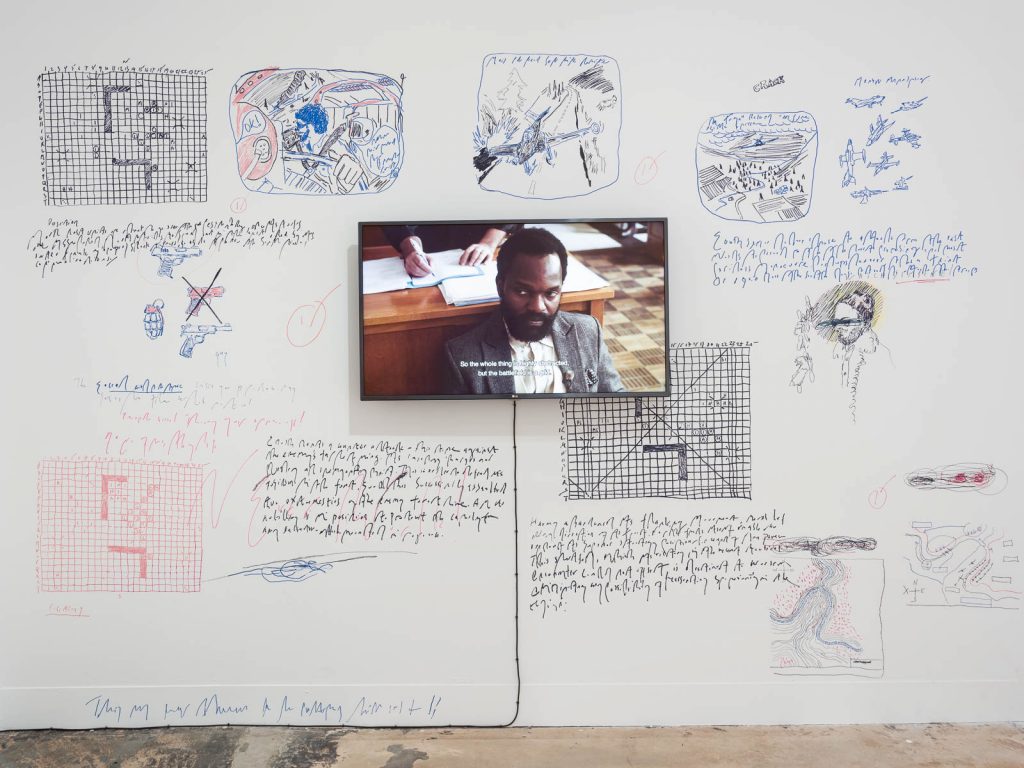The ten films displayed here are selected from Kambalu’s series titled Nyau Cinema (2012 – ongoing), in which the artist performs as a liberated ‘everyman’, wittily demonstrating how freedom of expression can spark social connection.
In the final gallery, Kambalu shows expressions of individual freedoms in public spaces as joyfully transgressive acts. In Nyau Cinema (2012 – ongoing), Kambalu performs as a liberated ‘everyman’, wittily demonstrating how creative forms of freedom can spark social connection. Nyau Cinema is informed by film presentations that show an awareness of the viewer. As a young person, Kambalu delighted at the rapid live editing done by Malawian projectionists, who would splice together highlights from different Western action films in response to lively and proactive audiences. This experience is a key influence on Kambalu’s work, as well as the creative exploration by film makers of Early Cinema (c.1890–1910s). For example, Thomas Edison often made films less than a minute long that featured simple actions by vaudeville performers playing directly to the camera.
In Nyau Cinema, Kambalu works within a framework of 10 rules. As a Nyau he does not represent himself as an individual within the films, but instead performs short ‘rants’ of free expression in public spaces. He chooses locations in real life that could pass as film sets. Off camera the artist talks to intrigued strangers, who then sometimes hold the camera to film his activity.
Nyau cinema approaches film as a sovereign activity. Making film becomes a way of escaping the limitations and conventions of everyday life, where the self is playfully re-conceived as part a larger scheme of things. Nyau is a Chewa word for ‘excess’.
Nyau Cinema: The Rules
1. Nyau film must be conceived as a clip no longer than a minute.
2. Performance should be spontaneous and site/specific to found architecture, landscape, or object.
3. There must always be a conversation between performance and the medium of film.
5. Costume must be from everyday life.
6. Acting must be subtle but otherworldly, transgressive, and playful.
7. Editing must be limited to the aesthetics of primitive film and silent cinema.
8. Audio must be used sparingly, otherwise it must be performed live at film screenings.
9. Screening of a Nyau film must be in specially designed cinema booths or improvised cinema installations that compliment the spirit of the film.
10. Nyau cinema must encourage active participation from audience.
Samson Kambalu 26.8.13
